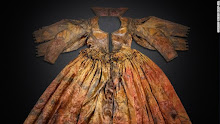 |
| Royal Wedding, 31 July 1981, Lady Diana Spencer and Charles, Prince of Wales |
In my book, The
End of the Fairy-Tale Bride: For Better or Worse, How Princess Diana Rescued
the Great White Wedding, I looked at the social and historical influences
of the wedding of Lady Diana Spencer and Charles, Prince of Wales, in 1981. The
event was a cultural phenomenon. For the first time in history, nearly a
billion people came together at the same moment to witness the same marvel, televised
in ‘living color’—could such a spectacle not help but shake up our global
psyche? We gathered around our clunky television sets as if anticipating some
long-ago promise fulfilled.
With its reassuring sense of order and thrilling dose of pageantry—courtly rituals and symbolic pomp, ceremonial uniforms and polished splendor—this royal wedding was like a soothing balm for a society reeling from the rebellious upheavals of the 1960s and ‘70s. The wedding came at the beginning of a decade that saw Reaganomics, Thatcherism, pseudo-Christian politics, and a “greed is good” mentality attempt to put a lid on those earlier outspoken youthful voices, female voices, Black voices railing against a tone-deaf, out-of-touch, vengeful society. These latest patriarchal forces may have quieted those voices of dissent, but the revolutionary spirit remained, laying groundwork for the next uprising of heart energy.
Weddings, especially royal ones, can indeed be profound bringers of change. Although Charles’ and Diana’s wedding played its part in gilding the last two decades of the twentieth century with a superficial gloss, it had a more enduring role, something of the heart—evident even before the glittering wedding dust had settled. The regal ceremony stirred the wonder of some deeply feminine ethos around the world with its fairy-tale longings and a beautiful, lit-from-within bride…a heart-centered young woman (a future revolutionary) becoming a real princess of a legendary kingdom at a time when a new wave of feminism was rising—which seemed to punctuate its own irony with a mythological purpose. (Was an ancient archetype for a new age rising as well?)
[Continue reading this book-in-progress excerpt on MEDIUM...posted with a rare photo from my former shop.]

















